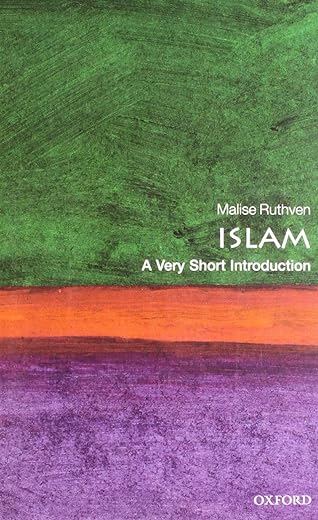Islam: A Very Short Introduction 2/e (Very Short Introductions)
£7.10£8.50 (-16%)
Malise Ruthven’s Very Short Introduction contains essential insights into issues such as why Islam has such major divisions between movements such as the Shi’ites, the Sunnis, and the Wahhabis, and the central importance of the Shar’ia (Islamic law) in Islamic life. It also offers fresh perspectives on contemporary questions: Why is the greatest ‘Jihad’ (holy war) now against the enemies of Islam, rather than the struggle against evil? Can women find fulfilment in Islamic societies? How must Islam adapt as it confronts the modern world?
In this new edition, Ruthven brings the text up-to-date by reflecting upon some of the most significant changes in the Muslim world in recent years; from the emergence of al-Qaeda and the attacks on New York and Washington on 9/11 and the ensuing wars in Afghanistan and Iraq, to the uprisings in the Middle East and North Africa. Ruthven includes new material surrounding the concept of a globalized Islam, bringing into question the effects of economic globalization, the effect of international events in Middle Eastern countries, the issues surrounding Islam and democracy, and the reception and perception of Islam in the West.
ABOUT THE SERIES: The Very Short Introductions series from Oxford University Press contains hundreds of titles in almost every subject area. These pocket-sized books are the perfect way to get ahead in a new subject quickly. Our expert authors combine facts, analysis, perspective, new ideas, and enthusiasm to make interesting and challenging topics highly readable.
Read more
Additional information
| Publisher | 2nd edition (26 Jan. 2012), OUP Oxford |
|---|---|
| Language | English |
| Paperback | 200 pages |
| ISBN-10 | 0199642877 |
| ISBN-13 | 978-0199642878 |
| Dimensions | 17.27 x 1.52 x 11.18 cm |










by Amazon Customer
This book borders on pro Islamic propaganda. The author is being very dishonest when he says that Islam stopped being spread by the sword at around 750 AD, as the Ottoman Empire reached its heights during the 14th-16th century. He also claims that Islam absorbed Zoroastrian traditions, and although it might be true, Islam actually erased Zoroastrianism from the map, while its influences are denied by religious Muslims like the influences from all pre-Islamic paganism are.
What I find most telling though is that in the chapter about Mohamed, the author left a blank space in one of the pages, explaining that this is where an image of the Prophet should have been, but was removed as it might offend some of the readers. Now, let’s think about this… if you are religious enough to be offended, surely you will not be reading an “A Very Short Introduction” book written by a Christian will you?! Could it be that the offended are not the readers but the financial sponsors of this book? Could it be that the same sponsors are so religious that they commissioned a “whitewashing” of their faith suitable for Western audiences?
It is a shame that such prestigious publishers left these things unchecked.
by dawn
good for getting an overview of Islam – I bought this book as I am now teaching Hinduism and it is good to have a basic idea of the religion
by abilone166
This is very good as an introduction to Islam but I did find the early chapters slightly confusing – not because it is badly written (it isn’t) but simply because the early history of Islam is very confusing – the early doctrinal shifts. In other words, I suppose I would have preferred it to be even shorter and simpler. But that is a reflection of me. I certainly finished the book with a clearer understanding of what is happening in the modern world – which is what I wanted – and I finished the book with an increased admiration for Islam – a much-misunderstood religion. The maps are excellent.
by AVB
quite a heavy read – but a good way into learning more about what seem to dominate the news at the moment.
by Mel Powell
This is not a spiritual guide to Islam. It is a fairly dense but brief introduction to the history of Islam as a religion and a political ideology. I downloaded it because I wanted to have a better understanding of its origins, the rise of Islamic sectarianism, it’s teachings and impact in the world theatre today, without having to wade through any translated religious texts or spending an undue amount of time on the exercise. Although, I felt at the outset this text was probably aimed at someone with a better than passing acquaintance with the topic, I found it pretty easy to get through and do feel better informed. Not sure how much wiser I am though! The author gives a pretty unbiased account although he does offer his own conclusions at the very end. Good Kindle copy and recommend for people who want that brief overview.
by Mr. P. G. Mccarthy
I’ve always rated this book quite highly. Students find the opening chapter hard-going, but it is easier after that. This updated edition maintains the distinction it makes in the earlier edition between Islam and Islamism, stressing that the latter is not Islam. But it doesn’t come across as convincing and isn’t a sufficiently self critical idea (other scholars have argued quite strongly that this is simplistic; and it isn’t clear which model is being used as normative of the religion). I have sympathy with the approach, but the early chapters left me not fully convinced.
Being a little picky, I feel the very familiar passages, now quite old, swiftly brought up-to-date by recent events seems a little lazy. The book probably needs a re write (following what is happening with other VSIs on religions).
by N. J. Parker
I needed an overview of Islam that was relatively easy to digest and this book offers that. Only half way through.
by The Collector
I bought this book because it is recommended for an OU course. I am not Moslem so I needed a fairly basic introduction. Some books I looked at are so basic that they would insult almost anyone’s intelligence, while others are aimed at people who already have a sound knowledge. This book is pitched at exactly the right level for the intelligent beginner.